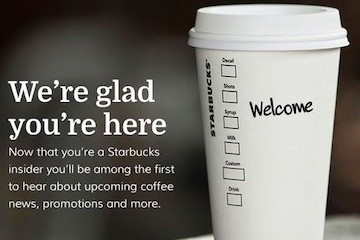Ecommerce has experienced incredible changes in the past few months. Consumers who had not embraced online retail are now forced to adopt it. Email segmentation can help marketers reach these new buyers by improving relevancy.
The concept of email segmentation is to divide your subscribers based on behavior or demographics, with each group receiving unique messaging, offers, or even frequency. Segmentation, done right, keeps subscribers engaged.
In this post, I’ll describe the most effective ways to segment an email list for ecommerce.
4 Email Segments for Ecommerce
Geography. Segmenting your email file by geography during the pandemic is vital. For example, the New York City area was experiencing stringent Covid-19 lockdowns a few months ago. Now, New York and much of New England have improved. Consumers are eager to resume pre-lockdown routines. But the opposite is occurring in other U.S. and overseas regions.
To segment by geography, first locate the records that have the address attached. Then create segments by regions, such as country, state, or even city.
For subscriber records without a physical address, use a reverse email append process through a data provider, to add the physical location. Otherwise, create an “Unknown” segment to receive information that is location agnostic.
New vs. established customers. Retaining these new customers could be challenging as physical stores reopen and inventory levels stabilize. A key retention method is to send new customers different messages, cadence, and offers.
First, isolate purchasers that are new in the previous three months. Create a separate segment for these consumers. Review the types of products they purchased and the referral source. This could provide insights as to why they converted, which could help with email messaging and cadence.
In most instances, emails to newly acquired customers should be more frequent initially and then taper off. In that respect, the email sequence for a new customer is similar to a new subscriber sequence.

Welcome email from Starbucks to new “insider” members.
Subsequent email messages, however, should remind new customers why they initially visited your site, such as fast shipping, inventory availability, pricing, or unique items.
Product category. Dividing your email file by product-category purchased can help identify relevant offers. Monitor early adopters, too — the customers to gravitate to new items. Finally, communicate product availability upfront in the subject line or pre-header to encourage opens and clicks.

This email offer from Coach for a new purse can appeal to early adopters — consumers that gravitate to new items.
Life stage. A consumer’s life stage largely determines the types of products she purchases. Segmenting an email list in lifecycle clusters facilitates personalized and relevant content. Some popular lifestyle clusters include:
- Single professionals,
- Double income, married, no children,
- Young families,
- Families with older children,
- Empty nesters,
- Retirees.
Segmenting these groups and sending relevant, timely offers to each can greatly improve opens, clicks, and conversions. For example, an offer for baby products could be relevant for young families and even empty nesters and retirees who may have grandchildren. But it would likely not work for single professionals or couples with no children. Moreover, sending irrelevant offers could cause unsubscribes.
High-value Audiences
The practice of segmenting an email file will ultimately help a merchant identify high-value audiences. After emails are sent to each audience, review the metrics carefully. Isolate opens, clicks, and conversions. Calculate the average revenue per email sent for your entire database.
Say, for example, that you earned roughly $3 per email sent, on average, for your overall entire list. Then look at segments to see which are higher. You’ll likely identify segments that consistently perform higher than average.
Review the demographic and behavioral traits of those high-value segments. It can help with future prospecting efforts, to gain more of those buyers.







